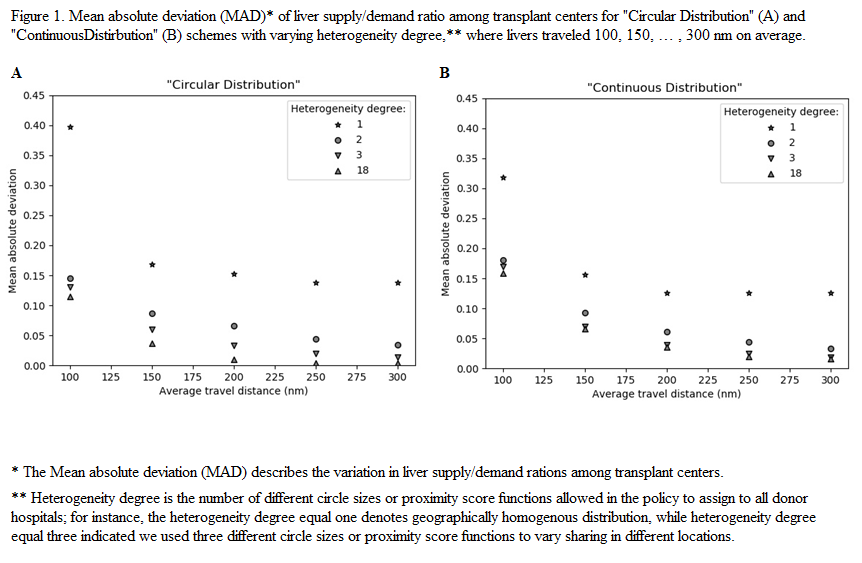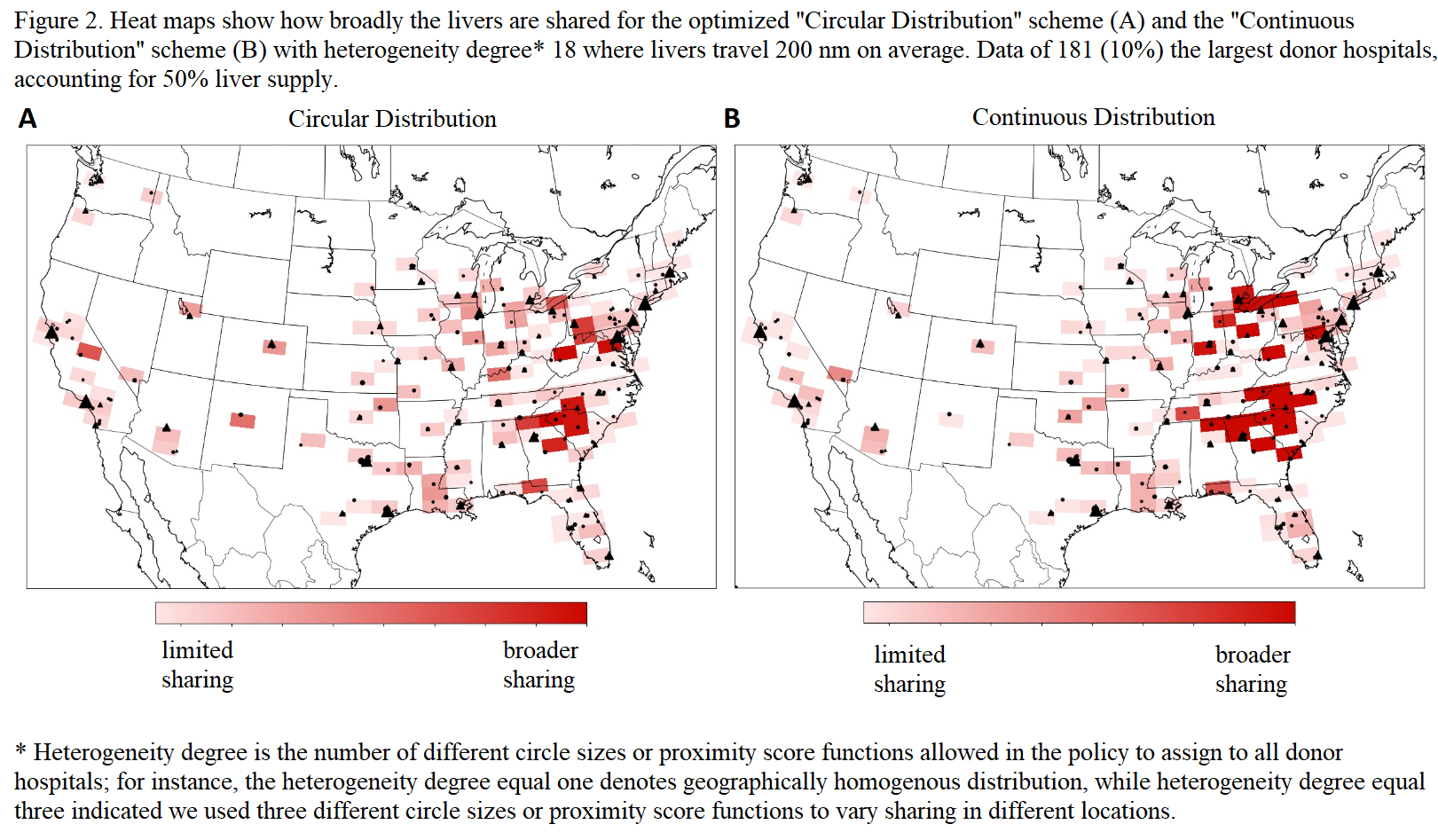When One Size Does Not Fit All: Geographically Heterogeneous Liver Distribution
1KAUST, Thuwal, Saudi Arabia, 2US Naval Academy, Annapolis, MD, 3JHU, Baltimore, MD, 4MIT, Boston, MA
Meeting: 2021 American Transplant Congress
Abstract number: 1153
Keywords: Allocation, Liver
Topic: Clinical Science » Liver » Liver: MELD, Allocation and Donor Issues (DCD/ECD)
Session Information
Session Name: Liver: MELD, Allocation and Donor Issues (DCD/ECD)
Session Type: Poster Abstract
Session Date & Time: None. Available on demand.
Location: Virtual
*Purpose: The new liver allocation system prioritizes distribution within acuity circles, instead of within DSAs. Acuity circles have the same radius around all donor hospitals across the U.S. Allowing acuity circles around each hospital to have their own customized radii might reduce the geographic disparity in the liver supply/demand ratio.[SG1] We explored the effect of a heterogeneous system with an increasing number of alternative radii for acuity circles. Similarly, we explored the effect of continuous distribution policies with an increasing number of alternatives for the weight given to geographic.
*Methods: Using 07/2013-06/2017 SRTR data, we compared circular (continuous) distribution schemes using a uniform radius (geographic distance weight) across the U.S., with schemes using an increasing number of alternatives for the radii (weights). We built an optimization model that designed distribution schemes that minimize the variation (mean absolute deviation) in the liver supply/demand ratio between transplant centers.
*Results: For circular (continuous) distribution, when using two radii (distance weight) alternatives, instead of one, the variation in liver supply to demand ratio decreased from 0.153 (0.126) to 0.066 (0.061) having livers travel 200 nm on average (Fig. 1). Maintaining a similar level of variation in the liver supply/demand ratio, the average liver travel could be reduced from 200 nm to 150 nm when distributing organs using 18 different circle radii or distance weights instead of three (Fig.1). Donor hospitals in fairly isolated areas like California, Texas, Florida, or Washington were sharing livers locally to nearby transplant centers. On the contrary, many donor hospitals in the Midwest and Southeast could share organs broadly to boost transplant rates in distant undersupplied centers (Fig.2).
*Conclusions: Geographically heterogeneous liver distribution schemes can reduce variation in the liver supply/demand ratio among transplant centers and reduce transportation burden. The latter potential diminishes fast with heterogeneity of the scheme.
To cite this abstract in AMA style:
Mankowski MA, Gentry S, Segev D, Trichakis N. When One Size Does Not Fit All: Geographically Heterogeneous Liver Distribution [abstract]. Am J Transplant. 2021; 21 (suppl 3). https://atcmeetingabstracts.com/abstract/when-one-size-does-not-fit-all-geographically-heterogeneous-liver-distribution/. Accessed July 16, 2025.« Back to 2021 American Transplant Congress


